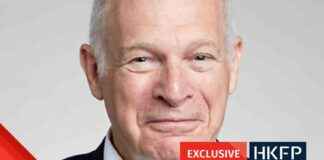When the US made the shocking decision to freeze $44 billion in aid funding last month, the repercussions were felt instantly across South Asia. The abrupt halt not only jeopardized critical humanitarian projects but also put thousands of jobs at risk in the development sector. As smaller aid-dependent nations like Bangladesh and Nepal grappled with the crisis, a larger question loomed over India: could it rise to the challenge and fill the void left by the United States?
The unforeseen blow came on January 20, when President Donald Trump signed an executive order pausing USAID funding for 90 days pending a review. This move sent shockwaves through communities that relied on support from the United States Agency for International Development, leaving social development workers in the region uncertain about their future. The impact was stark in countries like Bangladesh and Nepal, both struggling economies in South Asia that heavily leaned on USAID for vital initiatives spanning food security, healthcare, education, and agricultural development. In 2023, Bangladesh received $490 million in aid, while Nepal had a five-year development agreement worth $659 million in 2022.
Reflecting on the sudden withdrawal of aid, a senior healthcare executive in India, who previously worked on USAID-backed projects, expressed frustration, saying, “They could have given us notice about projects that didn’t align with their priorities instead of closing them so abruptly. Now, the entire development sector is in disarray.” The sentiment resonated with many in the field, highlighting the far-reaching consequences of the funding freeze.
India, despite receiving less US aid in recent years compared to its size, is not immune to the ripple effects. In 2024, the country received an estimated $150 million from USAID, supporting crucial projects such as maternal and child healthcare, climate change adaptation through digital tools, and access to low-cost HIV drugs in remote areas. These initiatives, implemented in partnership with 26 civil society organizations across 582 districts, not only provided a lifeline to vulnerable communities but also served as hotbeds of innovation.
Challenges and Opportunities
As India grapples with the aftermath of the aid freeze, the nation faces a dual challenge: meeting the needs of its own population while potentially stepping up to support neighboring countries in the absence of US aid. The sudden vacuum left by the funding cut has created an urgent demand for alternative sources of support and innovative solutions to sustain ongoing projects. Despite the daunting circumstances, this crisis also presents an opportunity for India to showcase its leadership in the region and demonstrate its commitment to fostering development and stability in South Asia.
In response to the unfolding situation, Indian policymakers, NGOs, and grassroots organizations are mobilizing efforts to mitigate the impact of the aid freeze. Collaborative initiatives are underway to identify gaps in critical sectors, explore sustainable funding mechanisms, and leverage local expertise to ensure continuity in essential projects. While the road ahead may be fraught with challenges, the resilience and resourcefulness of the Indian development sector bode well for navigating through this turbulent period.
Looking Ahead
As India navigates the shifting landscape of international aid, the country stands at a crossroads, poised to redefine its role in shaping the future of South Asia. With a rich history of balancing foreign assistance with economic growth, India has the potential to emerge as a beacon of hope and stability in the region. By leveraging its vast resources, expertise, and innovative spirit, India can not only weather the current crisis but also emerge stronger, more resilient, and better equipped to address the evolving needs of its people and its neighbors.
The road ahead may be uncertain, but with determination, collaboration, and a shared commitment to development, India has the opportunity to rise to the challenge and chart a new course for sustainable progress in South Asia. As the world watches and waits to see how India responds to this defining moment, one thing remains clear: the future of the region hinges on India’s ability to rise to the occasion and lead by example.



















